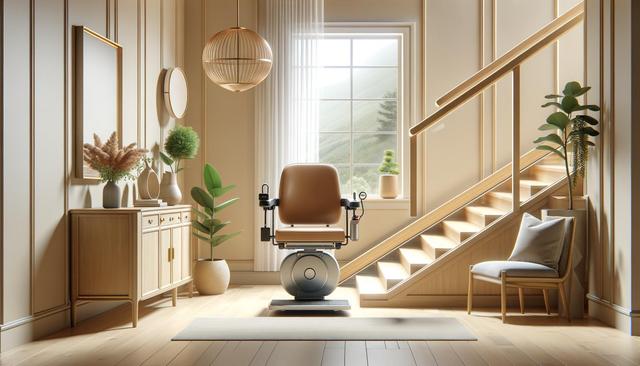Enhancing Home Accessibility
For individuals with limited mobility, navigating stairs can be one of the most difficult and potentially dangerous tasks in the home. Stair lifts provide a reliable way to overcome these challenges, making all levels of a home accessible without the need for major renovations. By installing a stair lift, users can maintain their independence while reducing the risk of falls or injuries associated with climbing stairs. These devices are especially beneficial for older adults, people recovering from surgery, and those with chronic conditions that affect movement.
Stair lifts are designed to be user-friendly, typically featuring a comfortable seat, safety belt, and easy-to-use controls. Many models also include swivel seats for safer transfers at the top and bottom of the stairs. With customizable options to fit straight or curved staircases, stair lifts can be installed in various home layouts without compromising existing design or space.
Supporting Daily Activities
Mobility limitations can impact everyday routines, making it harder to perform simple tasks like carrying laundry, accessing bedrooms, or even answering the door. Stair lifts help restore autonomy by allowing users to move freely between floors. This enhanced mobility not only improves practical functionality but also fosters emotional well-being by reducing feelings of isolation and dependency.
Some of the key ways stair lifts support daily living include:
- Reducing physical strain when accessing upper floors
- Allowing caregivers to focus on other tasks instead of assisting with stairs
- Providing a safe means to transport small items up and down levels
By integrating a stair lift into the home, individuals can continue engaging in their normal routines more comfortably and confidently, which often translates into a better quality of life.
Improving Safety at Home
Falls are a leading cause of injury among older adults and people with mobility impairments. Staircases, in particular, pose a high risk due to uneven steps, poor lighting, or lack of handrails. Stair lifts eliminate the need for users to physically navigate the stairs, thereby significantly reducing the likelihood of accidents. Most stair lifts include several safety features such as:
- Seat belts and armrests for added security
- Obstruction sensors that stop the lift if an object is detected on the stairs
- Lockable controls to prevent unauthorized use
- Battery backup to ensure functionality during power outages
These built-in safeguards help create a safer living environment and give peace of mind to both users and their families. In homes with children or pets, additional safety precautions such as key locks or folding rails can further enhance protection.
Design and Customization Options
Modern stair lifts come in a variety of styles and configurations, allowing homeowners to choose a model that fits both their physical needs and aesthetic preferences. Whether the staircase is straight, curved, narrow, or wide, there are systems available that can be tailored to the specific structure of the home. Custom railings, seat upholstery options, and foldable components ensure the stair lift blends well with the existing decor and minimizes obstruction in shared spaces.
In addition to physical customization, users can often select from a range of operating features such as:
- Remote controls for calling the lift from another floor
- Swivel seats for easier entry and exit
- Adjustable seat heights
- Footrests that fold automatically
This attention to detail in design makes stair lifts a versatile and adaptable solution for many different households, increasing their appeal across a broad spectrum of users.
Long-Term Value and Maintenance
While the initial investment in a stair lift may seem significant, the long-term benefits often outweigh the cost. By enabling individuals to stay in their own homes longer, stair lifts can delay or even prevent the need for relocation to assisted living facilities. This not only supports emotional well-being but can result in substantial financial savings over time.
Many stair lifts require minimal maintenance, with occasional servicing to ensure optimal performance. Reputable providers typically offer warranties and service plans that cover regular inspections and repairs. Key maintenance practices include:
- Keeping the track clean and free of debris
- Checking the battery status periodically
- Ensuring the seat and controls remain in good working order
By following manufacturer guidelines and scheduling routine check-ups, users can enjoy dependable performance from their stair lift for many years.
Conclusion
Stair lifts are a practical and empowering solution for individuals experiencing mobility challenges in multi-level homes. They enhance accessibility, promote independence, and significantly improve safety. With customizable features and various design options, stair lifts can be tailored to suit different needs and preferences. For those seeking to maintain their daily routines and continue living comfortably in their own homes, investing in a stair lift offers a meaningful step toward improved mobility and peace of mind.
